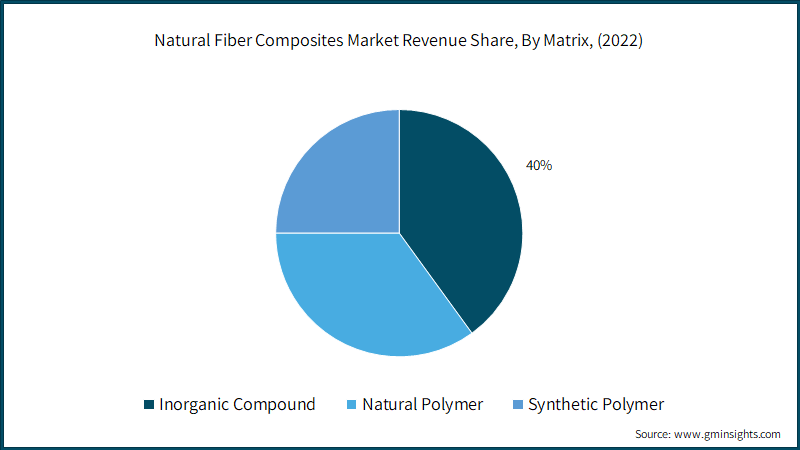The Future Of Natural Fiber Composites: A Market Forecast To 2029

Table of Contents
Driving Forces Behind the Growth of the Natural Fiber Composites Market
Several factors are converging to propel the natural fiber composites market to unprecedented heights. These include escalating sustainability concerns, cost-effectiveness, and significant technological advancements.
Sustainability Concerns and Environmental Regulations
The global push towards sustainability is a primary driver of NFC market expansion.
- Increasing demand for eco-friendly materials: Consumers and businesses are increasingly seeking products with a lower environmental footprint.
- Stricter environmental regulations: Governments worldwide are implementing stricter regulations to curb pollution and promote sustainable practices, favoring bio-based alternatives like NFCs.
- Growing consumer awareness: A more informed public is demanding sustainable products, driving market demand for environmentally responsible materials.
- Government incentives and subsidies: Many governments are offering incentives and subsidies to promote the adoption of sustainable technologies, including the use of natural fiber composites in various applications.
These factors collectively create a strong regulatory and consumer-driven impetus for the adoption of sustainable materials like bio-based composites and green materials.
Cost-Effectiveness and Availability of Raw Materials
Natural fibers offer a significant cost advantage over traditional synthetic fiber composites.
- Lower cost compared to synthetic fiber composites: The raw materials for NFCs – flax, hemp, jute, bamboo, and others – are generally cheaper and more readily available than petroleum-based alternatives.
- Abundant availability of natural fibers: These renewable resources are widely available, reducing reliance on finite fossil fuels.
- Reduced reliance on petroleum-based resources: This factor contributes significantly to both cost savings and reduced environmental impact.
The cost-effective nature and sustainable sourcing of these renewable resources make natural fiber composites a highly attractive option for various industries.
Technological Advancements and Improved Performance
Ongoing research and development efforts are constantly improving the performance characteristics of natural fiber composites.
- Research and development leading to enhanced mechanical properties: Scientists and engineers are developing innovative techniques to improve the strength, stiffness, and durability of NFCs.
- Development of new processing techniques for improved efficiency: More efficient and cost-effective processing methods are being developed to enhance the manufacturing process of natural fiber composites.
- Innovative applications expanding the market reach: The versatility of NFCs is leading to their adoption in an ever-widening range of applications.
These technological advancements are crucial for overcoming past limitations and expanding the applications of composite materials made from natural fibers.
Key Applications and Market Segmentation of Natural Fiber Composites
The versatility of natural fiber composites makes them suitable for a wide range of applications across various industries.
Automotive Industry: Lightweighting and Reduced Emissions
The automotive sector is a major adopter of NFCs, driven by the need for lightweighting and reduced emissions.
- Use in car parts, interior components, and body panels: NFCs are used to create lighter vehicle components, leading to improved fuel efficiency.
- Contribution to fuel efficiency and reduced carbon footprint: Lightweighting directly translates to reduced fuel consumption and lower greenhouse gas emissions. Bio-based automotive materials contribute to a smaller carbon footprint throughout the vehicle lifecycle.
Construction and Building Materials: Sustainable and Durable Solutions
The construction industry is increasingly incorporating NFCs for sustainable and durable building solutions.
- Use in insulation, structural elements, and composite materials: NFCs provide excellent insulation properties and can be used in various structural applications.
- Durability and strength comparable to traditional materials: Technological advancements have improved the durability and strength of NFCs, making them a viable alternative to conventional building materials in sustainable construction projects.
Packaging and Consumer Goods: Biodegradable and Compostable Alternatives
NFCs are finding increasing use in packaging and consumer goods as biodegradable and compostable alternatives.
- Use in packaging, disposable products, and consumer goods: NFCs provide a sustainable alternative to petroleum-based plastics in packaging and disposable products.
- Biodegradability reducing environmental impact: The biodegradability of these materials significantly reduces the environmental burden compared to non-biodegradable alternatives in sustainable packaging applications.
Challenges and Opportunities in the Natural Fiber Composites Market
While the future looks bright for natural fiber composites, certain challenges and opportunities must be addressed.
Challenges: Variability in Raw Material Properties & Scalability of Production
One of the key challenges is the inherent variability in the properties of natural fibers and the scalability of production.
- Addressing inconsistencies in fiber quality and processing: Ensuring consistent quality and standardizing processing techniques are crucial for widespread adoption.
- Scaling up production to meet growing demand: Expanding production capacity while maintaining quality is essential to meet the increasing global demand for sustainable materials. This requires investment in efficient and scalable manufacturing processes and supply chain optimization.
Opportunities: Innovation in Fiber Treatment and Hybrid Composites
Despite the challenges, there are significant opportunities for innovation and growth.
- Developing new treatments to improve fiber properties: Research into new treatments to enhance the mechanical properties of natural fibers will broaden their applications.
- Exploring hybrid composites combining natural and synthetic fibers: Combining the best qualities of both natural and synthetic fibers can create high-performance materials with enhanced properties. This approach balances the sustainability benefits of natural fibers with the superior performance of certain synthetic materials.
Market Forecast and Future Trends for Natural Fiber Composites to 2029
The natural fiber composites market is projected to experience robust growth in the coming years. While precise figures vary depending on the source and methodology, a significant expansion is anticipated, driven by the factors discussed above. Key regions are expected to show strong growth, particularly those with established manufacturing bases and supportive government policies promoting sustainable materials. Future trends indicate increasing innovation in material processing and the development of new applications across diverse sectors. The market is expected to see continued expansion in automotive, construction, packaging and consumer goods applications, along with further diversification into new areas like aerospace and electronics. Further research and development into fiber treatment and hybrid composite technologies will drive this expansion. (Note: Specific market size and growth rate data and charts would be included here in a complete article.)
Conclusion: Investing in the Future with Natural Fiber Composites
Natural fiber composites represent a significant opportunity for sustainable growth across multiple industries. The market is poised for substantial expansion, driven by escalating environmental concerns, cost-effectiveness, and continuous technological advancements. Their application in automotive, construction, and packaging sectors presents substantial opportunities, while ongoing research promises further innovation in fiber treatment and hybrid composite materials. Explore the opportunities in the natural fiber composite market and learn more about sustainable natural fiber composite solutions. Invest in the future of bio-based composites – a future built on sustainability and innovation.

Featured Posts
-
 Manufacturers Prioritize Cybersecurity A 63 5 Investment Surge
May 13, 2025
Manufacturers Prioritize Cybersecurity A 63 5 Investment Surge
May 13, 2025 -
 Discovering The Wonder Of Animals Conservation Efforts And The Future Of Wildlife
May 13, 2025
Discovering The Wonder Of Animals Conservation Efforts And The Future Of Wildlife
May 13, 2025 -
 Undrafted Rookies Rise Impact On Aces Draft Picks
May 13, 2025
Undrafted Rookies Rise Impact On Aces Draft Picks
May 13, 2025 -
 Double Standards Examining Uk And Australian Responses To The Myanmar Crisis
May 13, 2025
Double Standards Examining Uk And Australian Responses To The Myanmar Crisis
May 13, 2025 -
 Dodgers 11 10 Defeat A Close Contest
May 13, 2025
Dodgers 11 10 Defeat A Close Contest
May 13, 2025
